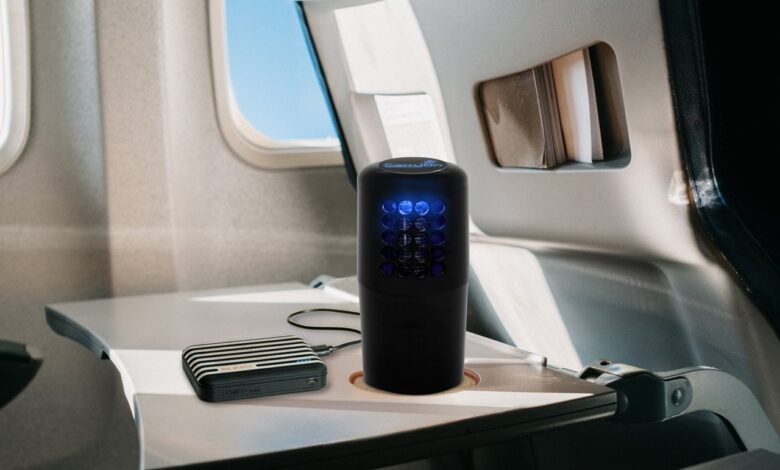
Stay inside for spare the air days is a crucial initiative for protecting our health and the environment. These days, often announced by local authorities, are designated to reduce pollution levels. Understanding the reasons behind these days, how they impact daily life, and what to do to stay safe and healthy is essential for us all.
This post will delve into the specifics of Spare the Air days, including the environmental causes, health implications, and most importantly, what you can do to stay safe and healthy. We’ll explore practical tips for making the most of these days indoors, from creative activities to educational pursuits, and discover the role of communities and businesses in responding to these events.
Understanding the “Spare the Air” Days
“Spare the Air” days are declared when air quality deteriorates to unhealthy levels, typically due to high concentrations of pollutants. These advisories are crucial for public health and environmental protection. Understanding the reasons behind them and the steps taken to mitigate the impact is essential for residents.”Spare the Air” days are implemented to protect public health and the environment by reducing harmful air pollution.
The measures put in place during these days are designed to improve air quality and safeguard the well-being of residents. They aim to limit exposure to pollutants, especially for vulnerable populations like children, the elderly, and those with respiratory conditions.
Definition of “Spare the Air” Days
“Spare the Air” days are advisories issued by local authorities when air quality reaches unhealthy levels. These advisories are designed to reduce pollution and protect public health. They inform the public of the need to reduce activities that contribute to air pollution.
Environmental Reasons Behind “Spare the Air” Days
Poor air quality is often caused by a combination of factors, including vehicle emissions, industrial activity, and seasonal weather patterns. High concentrations of pollutants can result in smog formation, impacting visibility and causing harm to the environment. The formation of smog is often a result of the reaction of sunlight with nitrogen oxides and volatile organic compounds.
Types of Pollutants Impacting Air Quality
Various pollutants contribute to unhealthy air quality during “Spare the Air” days. Common pollutants include particulate matter (PM2.5 and PM10), ozone (O3), nitrogen oxides (NOx), and sulfur dioxide (SO2). Particulate matter, in particular, poses a significant health risk, as it can penetrate deep into the lungs. Ozone, while a beneficial component of the upper atmosphere, can be harmful at ground level.
It is often associated with photochemical smog. Nitrogen oxides are primarily emitted from vehicles and industrial sources. Sulfur dioxide is a byproduct of the burning of fossil fuels.
Staying inside during Spare the Air days is a great way to protect the air quality, but it doesn’t mean you can’t still enjoy the holidays! If you’re planning a gathering, especially during the omicron wave, consider checking out how to safely plan a holiday gathering during the omicron wave for some helpful tips on keeping everyone safe and healthy.
Ultimately, we all need to prioritize our health, so it’s important to stay inside and reduce our emissions during these days.
Local Authorities Responsible for Issuing Advisories
Local air quality management agencies, often within the environmental protection departments of cities and counties, are responsible for issuing “Spare the Air” advisories. They monitor air quality data and evaluate the levels of pollutants. When thresholds are exceeded, they issue the advisories.
Measurement of Air Quality
Air quality is measured using a network of monitoring stations. These stations collect data on various pollutants, including particulate matter, ozone, nitrogen oxides, and sulfur dioxide. The data is collected continuously and analyzed to determine whether air quality levels exceed the established thresholds. Monitoring stations utilize specialized equipment to collect and analyze air samples, with the data regularly reported.
Health Implications of Poor Air Quality
Poor air quality can have severe health consequences, particularly for vulnerable populations. Exposure to pollutants can exacerbate respiratory illnesses, trigger asthma attacks, and lead to cardiovascular problems. Long-term exposure can even increase the risk of certain cancers. Individuals with pre-existing respiratory or cardiovascular conditions are especially susceptible to adverse effects.
Impact on Daily Life
Spare the Air days, designed to improve air quality, significantly impact daily life for residents. These days often lead to noticeable changes in routines and activities, affecting various demographics and industries. Understanding these impacts allows for better planning and adaptation.The implementation of Spare the Air days necessitates adjustments to daily schedules and habits, particularly those involving outdoor activities.
Businesses, especially those reliant on outdoor operations, must also adapt their operations, leading to potential economic consequences. This impact varies across different demographics and lifestyles.
Common Impacts on Individuals
Spare the Air days typically affect individuals through restrictions on certain activities. These restrictions aim to curb emissions and protect public health. For example, people might adjust their daily commute, substituting car travel for alternative methods like public transportation, cycling, or walking. This can cause delays and inconvenience. Outdoor exercise routines may need to be adjusted or postponed.
Staying inside during Spare the Air days is crucial, especially for those with respiratory sensitivities. My own two decade journey with cancer immunotherapy, detailed in my two decade journey with cancer immunotherapy , has taught me the importance of prioritizing lung health. Clean air is vital for everyone, but even more so for those with compromised respiratory systems.
So, let’s all do our part to protect our lungs and stay inside when necessary.
Impacts on Businesses
Businesses, especially those operating outdoors, experience tangible impacts. Restaurants with outdoor seating might see reduced revenue due to fewer customers. Construction sites and landscaping companies may face limitations on their operations, potentially delaying projects. Outdoor markets and farmers’ markets may also experience reduced foot traffic.
Impact on Outdoor Recreation
Outdoor recreation activities, such as hiking, biking, and picnics, are often curtailed during Spare the Air days. This can significantly affect the enjoyment of outdoor spaces. Parks and trails might see a decrease in visitors. Parks and recreation departments often issue advisories about limitations on activities.
Impact on Different Demographics
The impact of Spare the Air days varies based on demographic factors. Commuters who rely on personal vehicles are more affected than those who use public transportation or alternative methods. Families with young children who rely on outdoor play may find their routines disrupted. Those who have mobility limitations might find their options restricted, requiring careful consideration of their daily activities.
Traffic Patterns
Traffic patterns can be affected by the implementation of Spare the Air days. The reduced number of vehicles on the road may result in less congestion in some areas. However, public transportation and alternative modes of transportation may experience increased ridership, potentially leading to overcrowding.
Activities Allowed/Discouraged
| Activity | Allowed | Discouraged | Reasoning |
|---|---|---|---|
| Driving | Yes, unless specifically restricted | Driving high-emission vehicles or exceeding emissions limits | Driving contributes to air pollution, and restrictions on high-emission vehicles are designed to reduce pollution levels. |
| Outdoor exercise | Yes, but with caution | High-intensity outdoor exercise | High-intensity exercise can lead to increased respiratory problems for individuals sensitive to air pollution. |
Staying Indoors During “Spare the Air” Days

Spare the Air days, while inconvenient, present an opportunity for creative indoor adventures. Instead of feeling confined, view them as a chance to engage in stimulating activities, learn new skills, and strengthen family bonds within the comfort of your home. This approach allows for maximizing the time spent indoors, transforming it from a period of restriction to one of rich experiences.
This article delves into various indoor activities suitable for different age groups and interests. We will explore creative pursuits, educational endeavors, and playful games, turning a potential source of frustration into a fun-filled day. With careful planning, “Spare the Air” days can become treasured moments of togetherness and learning.
Creative Indoor Activities
Sparking creativity indoors can be as simple as rearranging furniture or painting a mural on a wall. Transforming a spare room into a makeshift art studio, complete with easels and canvases, can unleash artistic expression in everyone. For younger children, finger painting or creating collages using readily available materials can be a rewarding experience. Older children and adults can explore more complex creative pursuits like sculpting, pottery, or even learning a new craft like calligraphy or knitting.
The key is to provide ample opportunities for self-expression.
Educational Indoor Activities
Learning can be integrated into daily routines during Spare the Air days. Encouraging family members to read together, participate in online educational games, or research a topic of shared interest can transform the day into an educational adventure. For children, educational apps, interactive books, and documentaries can be a great resource. For adults, exploring online courses or engaging in a book club can be a stimulating intellectual pursuit.
Staying inside during Spare the Air days is a good way to limit your contribution to pollution, but it can also lead to some interesting dietary choices. For example, you might find yourself wondering about the sugar content in various foods. Why not take a quick quiz to test your knowledge of which common items have more sugar?
quiz what has more sugar It’s a fun way to learn while staying inside and reducing your impact on the air quality. So, while you’re limiting your outdoor activities, you can also be mindful of your food choices.
A treasure hunt around the house, using clues and riddles based on historical facts, can add an element of fun and learning.
Indoor Games and Hobbies
Indoor games offer a variety of entertainment options for all ages. Classic board games like chess, checkers, or card games can be a great way to bond with family members. For children, board games with simple rules and colorful illustrations can be especially engaging. Puzzle-solving activities like jigsaw puzzles or Sudoku can be enjoyable for people of all ages.
Learning a new musical instrument or starting a journal can also be fulfilling hobbies during a Spare the Air day. The goal is to find activities that match individual interests.
Maximizing Indoor Entertainment
To maximize indoor entertainment, consider creating a dedicated space for activities. This could be a designated play area for children or a cozy reading nook for adults. Prepare a list of activities in advance, ensuring there’s a diverse range to cater to different interests. Encourage communication and collaboration amongst family members to make the day more enjoyable.
Have a designated snack and beverage area to avoid interruptions during activities. Consider turning off electronic devices to encourage focus on the activities at hand.
Sample Schedule for a Spare the Air Day
A well-structured schedule can make a Spare the Air day more manageable and enjoyable. A suggested schedule could be as follows: Morning dedicated to educational activities, afternoon for creative endeavors, and evening for games and relaxation. Flexible timings can be adapted to suit individual preferences. It’s essential to create a schedule that accommodates everyone’s needs and interests.
Indoor Activities Categorized by Interest
| Category | Activity | Description |
|---|---|---|
| Creative | Drawing/Painting | Using various mediums to express artistic ideas. |
| Creative | Crafting | Engaging in activities like knitting, pottery, or jewelry making. |
| Educational | Reading | Engaging in shared reading sessions, exploring books together. |
| Educational | Online Learning | Utilizing educational apps, websites, or courses. |
| Games | Board Games | Playing classic board games like chess, checkers, or Monopoly. |
| Games | Card Games | Playing card games like poker, hearts, or rummy. |
Community Responses
Spare the Air days aren’t just about individual actions; they’re about collective responsibility and community support. A coordinated effort from various sectors, including businesses, public transportation, and local governments, can significantly impact the air quality and overall experience during these days. This collaborative spirit fosters a more sustainable and healthy environment for everyone.Community engagement is key to successful Spare the Air initiatives.
It’s not just about asking people to stay inside; it’s about providing alternatives and support that make staying indoors more convenient and enjoyable. Effective strategies encourage participation and demonstrate a commitment to environmental well-being.
Community-Based Initiatives and Support
Community-based initiatives during Spare the Air days often include organized indoor activities for residents. Libraries and community centers may host special events, workshops, and film screenings, encouraging people to spend time indoors. These activities foster a sense of community and create engaging alternatives to outdoor activities.
Public Transportation Improvements
Public transportation systems frequently adjust schedules and routes during Spare the Air days to accommodate increased ridership. Dedicated bus lanes and prioritized routes can streamline commutes and reduce congestion, making it easier for people to travel within the city without contributing to air pollution.
Examples of Public Transportation Improvements
Public transportation agencies may offer free or discounted fares to incentivize use of public transportation during Spare the Air days. Increased frequency of bus routes and metro trains is common, and some systems may implement express lanes for commuters. These adjustments provide a viable alternative to driving.
Business Adjustments
Businesses may adjust operations during Spare the Air days to minimize their environmental impact. For example, some companies may reduce or eliminate delivery vehicles’ trips, utilize electric vehicles, or encourage employees to telecommute.
Examples of Public Awareness Campaigns
Public awareness campaigns are crucial in informing residents about the importance of Spare the Air days. These campaigns use various media, including social media, television, and radio, to highlight the impact of air pollution on health and the environment. They may feature public service announcements, infographics, and interactive online resources.
Role of Local Governments in Promoting Indoor Activities
Local governments often play a vital role in promoting indoor activities during Spare the Air days. They can provide funding for community events, partner with businesses to offer discounts on indoor attractions, and organize citywide initiatives that encourage people to stay indoors.
Summary Table of Community Responses, Stay inside for spare the air days
| Community Group | Action | Impact |
|---|---|---|
| Libraries/Community Centers | Host events, workshops, film screenings | Provide indoor activities, promote community engagement |
| Public Transportation | Increased frequency, dedicated lanes, discounted fares | Improved accessibility, reduced congestion, lower emissions |
| Businesses | Reduced deliveries, electric vehicle use, telecommuting | Minimized emissions, reduced traffic, improved employee well-being |
| Local Governments | Funding for events, partnerships with businesses, citywide initiatives | Encourage indoor activities, improve public awareness, support environmental goals |
Environmental Considerations

Breathing clean air is a fundamental right, yet air pollution poses a significant threat to our health and the environment. Understanding the long-term effects of poor air quality is crucial for implementing effective strategies to mitigate its impact. This section delves into the multifaceted aspects of environmental considerations during “Spare the Air” days, exploring solutions and sustainable practices.Poor air quality isn’t just an inconvenience; it has profound and lasting consequences for both human health and the planet.
The pollutants in our air contribute to respiratory illnesses, cardiovascular problems, and even premature death. Long-term exposure can lead to chronic conditions and exacerbate existing health issues. Protecting our environment requires a comprehensive understanding of the impact of our actions.
Long-Term Effects of Poor Air Quality
The detrimental effects of poor air quality extend far beyond the immediate discomfort. Chronic exposure to pollutants can lead to a range of health problems, including asthma, bronchitis, and lung cancer. Studies have shown a strong correlation between high levels of air pollution and increased rates of cardiovascular disease and other health issues. The cumulative impact over years can have significant consequences for public health.
Alternative Transportation Options
Promoting alternative transportation options is crucial for reducing air pollution. Consider cycling, walking, or using public transportation whenever possible. Electric vehicles (EVs) are becoming increasingly popular and offer a cleaner alternative to gasoline-powered cars. Carpooling or utilizing ride-sharing services can further reduce the number of vehicles on the road. These actions can dramatically reduce our individual carbon footprint.
Reducing Individual Carbon Footprints
Individuals can significantly reduce their carbon footprint by making conscious choices in their daily lives. Adopting energy-efficient practices at home, such as using LED lights and energy-star appliances, can make a difference. Conserving water and reducing food waste are other important steps. Choosing to buy locally-sourced and sustainably produced goods can also contribute to a more environmentally friendly lifestyle.
Eco-Friendly Indoor Activities
Indoor activities can be just as fulfilling and enjoyable without impacting air quality. Engage in hobbies like painting, reading, or playing board games. Organize virtual gatherings or online learning sessions to reduce travel. These options promote relaxation and entertainment without contributing to air pollution. Embrace indoor pursuits to ensure healthy and sustainable leisure time.
Improving Air Quality: Comparing Methods
Various methods can be employed to improve air quality, and their effectiveness varies. Investing in public transportation systems, encouraging the use of electric vehicles, and promoting tree planting initiatives can have a substantial positive impact. Stricter emission standards for vehicles and industrial facilities are also critical. Government regulations and public awareness campaigns play a vital role in shaping behaviors and driving effective change.
Sustainable Indoor Living Practices
Creating a sustainable indoor environment involves adopting practices that minimize our environmental impact. Using natural light and ventilation whenever possible reduces reliance on artificial lighting and heating. Choosing eco-friendly cleaning products and opting for sustainable furniture materials further contribute to a greener home. Implementing these practices can significantly reduce our impact on air quality and resource consumption.
Closing Summary: Stay Inside For Spare The Air Days
In conclusion, Spare the Air days are a necessary step in protecting our environment and health. By understanding the reasons behind these days, the impact on our daily lives, and most importantly, the activities we can engage in indoors, we can all contribute to a cleaner, healthier future. Let’s work together to ensure these days are productive and beneficial for our communities.





